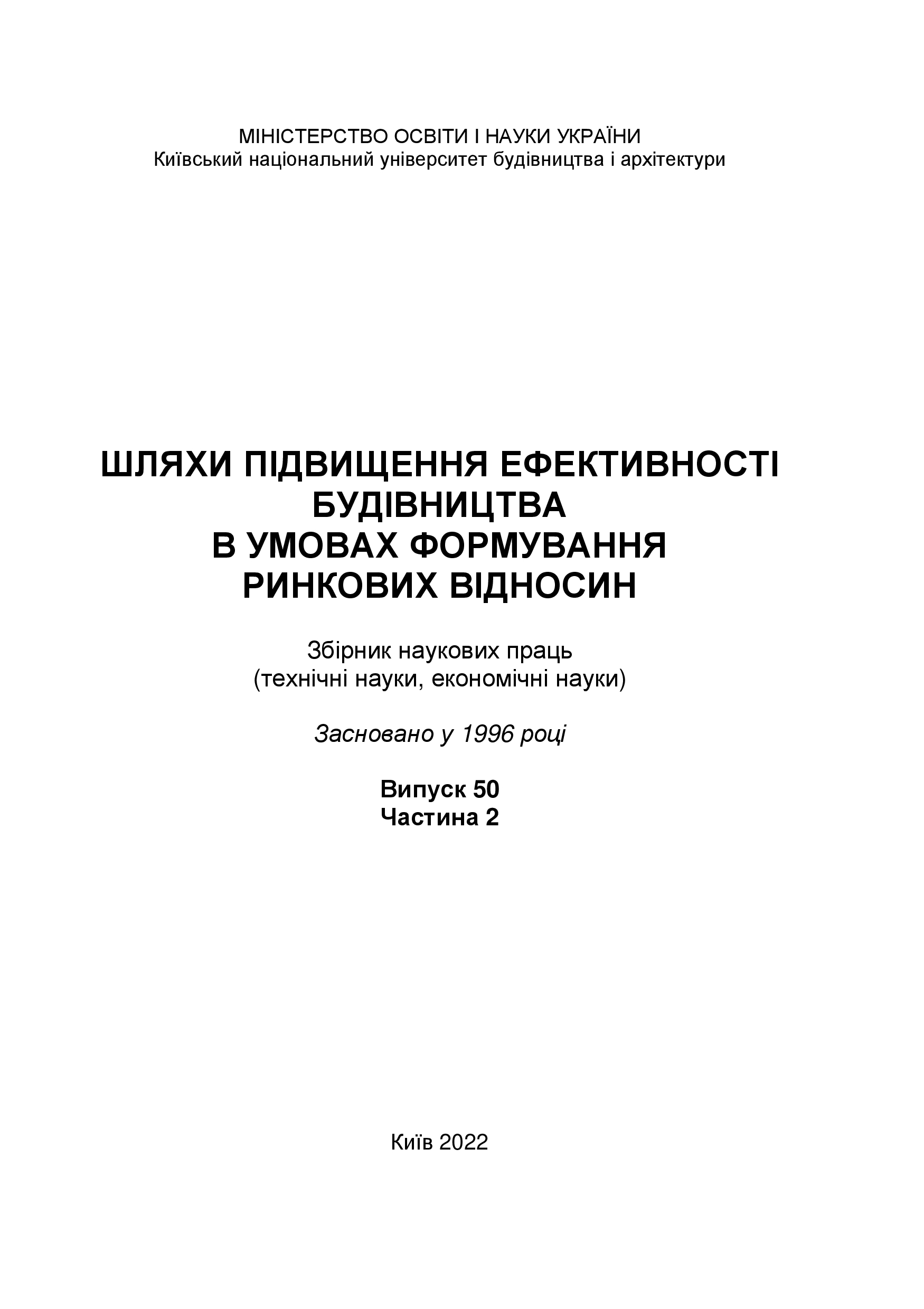Formation of the system of management of investment projects of reconstruction of the housing fund
DOI:
https://doi.org/10.32347/2707-501x.2022.50(2).162-171Keywords:
system, management, territory, investment, project, reconstruction, housing stockAbstract
It is substantiated that the lack of a comprehensive understanding of the management of investment projects for the reconstruction of the housing stock, taking into account the domestic investment and construction complex, determines the study of this process at the system level. The specificity of systematicity is that the research is aimed at establishing the laws and mechanisms of the formation of a complex object from its component parts and identifying various types of connections in the system, as well as introducing them into a single theoretical model.
The use of a system approach as a research methodology for investment design of housing reconstruction is proposed, which is based on the analysis of the object as a system and allows combining political, economic, social and other needs of the industry, taking into account the spatial characteristics of the territories.
Based on the interrelationships of the main components of project management within the framework of the system approach, a structural diagram of the system of management of investment projects of housing reconstruction was developed. Such a system includes a number of elements and subsystems (information-evaluative, predictive-analytical, providing, functional-instrumental) that closely interact and logically complement each other. These elements are separate subsystems at lower hierarchical levels and have their own tasks, purposes, tools (tools, levers, technologies, methods, etc.) of managerial influence.
The application of the researched theoretical and methodological foundations of the formation of the system of management of investment projects of housing reconstruction, which provide for a set of elements and interconnected subsystems, will make it possible in the future to more systematically form effective management measures to ensure this process.
References
Проблеми та перспективи розвитку житлової забудови в умовах комплексної реконструкції міста [Ю.І. Гайко, Т.В. Жидкова, Т.М. Апатенко та ін.; за заг. ред. Ю. І. Гайка, Т. В. Жидкової]. Харків: ХНУМГ ім. О. М. Бекетова, 2019. 247 с.
Про комплексну реконструкцію кварталів (мікрорайонів) застарілого житлового фонду: Закон України № 525-V від 22.12.2006. Відомості Верховної Ради України. 2007 р., № 10, стор. 441.
Крилов Д.В. Механізм формування системи управління інвестиційними проектами на промислових підприємствах. Вісник Одеського національного університету. Серія: Економіка. 2016. Т. 21, Вип. 9. С. 81–84.
Бушуєв С.Д., Бойко О.О. Системна інтеграція підходів в управлінні будівельними проектами. Управління розвитком складних систем. 2016. Вип. 26. С. 43-48.
Кустовська О.В. Методологія системного підходу та наукових досліджень: [курс лекцій]. Тернопіль: Економічна думка, 2005. 124 с.
Bertalnffy L. Von. General system theory. Foundations, development, applications, New York: George Braziller, 1968. 296 p.
Шкуратов О.І. Методологічні основи формування системи екологічної безпеки в аграрному секторі економіки. Збалансоване природокористування. 2016. № 1. С. 153–158.
Реновація промислової забудови та її адаптація до сучасного міського середовища [Ю.І. Гайко, Є.Ю. Гнатченко, О.В. Завальний, Е.А. Шишкін; за заг. ред. Ю.І. Гайка, Е.А. Шишкіна]. Харків: ХНУМГ ім. О.М. Бекетова, 2021. 353 с.
Shkuratov O., Khokhuliak O., Kushniruk T. The role of land resources in the financial provision of rural areas of Ukraine. Scientific Papers: Series Management, Economic Engineering in Agriculture and Rural Development. 2022. Vol. 22. Issue 3. P. 643–648.
Sobieraj J. Managing an investment project on the residential construction market. Cracow Lesser Poland Studies. 2015. No. 20, P. 174-176.
Downloads
Published
How to Cite
Issue
Section
License

This work is licensed under a Creative Commons Attribution 4.0 International License.
Authors who publish with this journal agree to the following terms:
- Authors retain copyright and grant the journal right of first publication with the work simultaneously licensed under a Creative Commons Attribution License that allows others to share the work with an acknowledgement of the work's authorship and initial publication in this journal.
- Authors are able to enter into separate, additional contractual arrangements for the non-exclusive distribution of the journal's published version of the work (e.g., post it to an institutional repository or publish it in a book), with an acknowledgement of its initial publication in this journal.
- Authors are permitted and encouraged to post their work online (e.g., in institutional repositories or on their website) prior to and during the submission process, as it can lead to productive exchanges, as well as earlier and greater citation of published work (See The Effect of Open Access).

